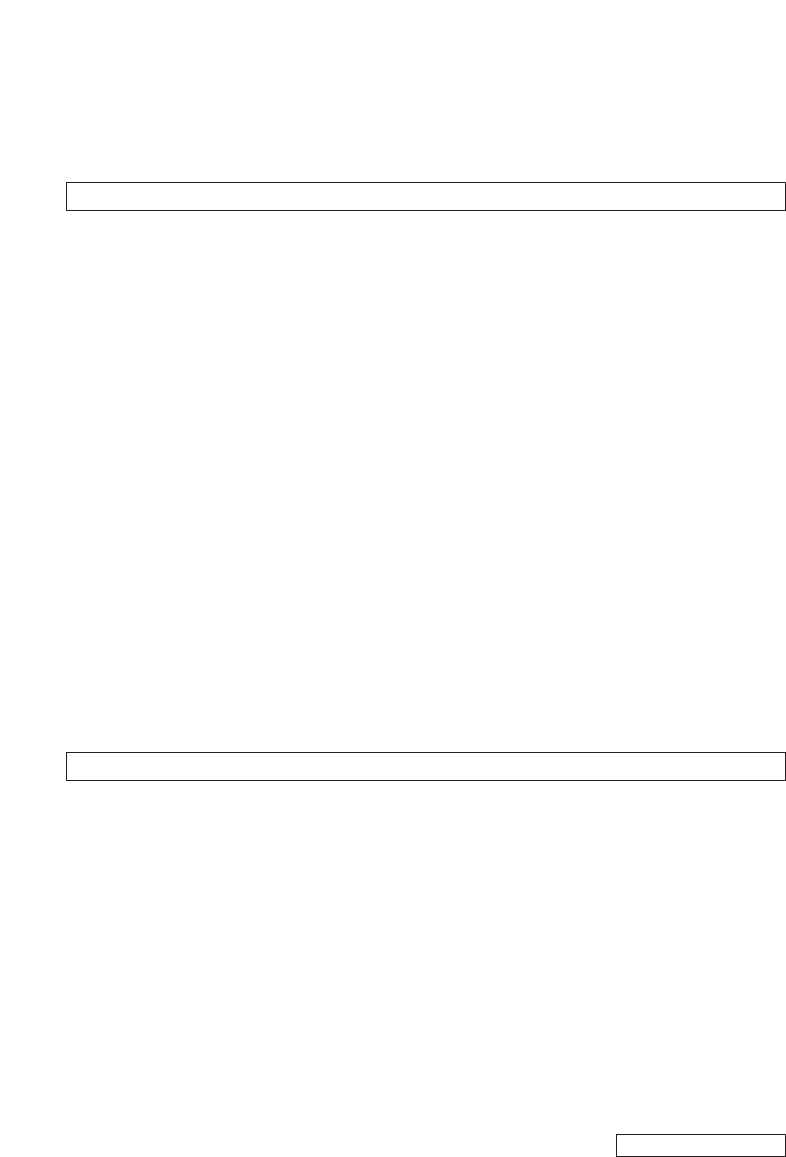
ENGLISH - 5
Then open screw 1 1/4 full turn (counterclockwise) .
If the engine speed is too high, open the screw about 1/4
turn (counterclockwise).
• I: The I (IDLE) screw controls the throttle opening to gov-
ern idle speed (2900 min
-1
) adjust as necessary.
CAUTION: increased idle speed may cause chain move-
ment.
The carburetor is adjusted for normal operation during pro-
duction. When considerable changes of altitude require a sup-
plementary adjustment, contact an authorised service station
which offers the latest in tools, parts and technical assistance.
H. Routine maintenance
Ensure engine is always switched off before any kind of
maintenance operation.
CHAIN: Check tension regularly. A new chain will require more
frequent adjustment. Loosen retention nuts. Tighten chain (see
assembly instructions). Tighten retention nuts and adjust.
1 BAR
– Clean the bar groove (K) and check the lubrication holes
(L) in the bar to ensure that they are not clogged.
– Grease sprocket periodically. Rotate sprocket and
repeat.
– Rotate bar periodically to maximise bar life.
2 AIR FILTER
– A dust clogged air filter may cause carburetor problems.
This may prevent the engine from reaching its maximum
r.p.m. and cause high fuel consumption.
– Remove cover.
– Wash filter in petrol (do not use fuel which is mixed with
oil).
– The filter can also be cleaned with compressed air.
– Replace filter if damaged or if it does not seal tightly in
the air box.
3 SPARK PLUG
Remove and clean the spark plug every 30 hours. Check
the electrode gap (0,5/0,6 mm. - 0.025 inches).
– Replace spark plug about every 100 working hours or
whenever it is extremely encrusted.
– Heavily encrusted electrodes can result from an incor-
rect carburetor setting or from wrong fuel mixture (too
much oil in the fuel mix) or a poor quality of oil in the fuel
mix. Check and correct.
4 OIL FILTER
The oil filter is on the end of the oil suction hose inside the
oil tank.
To clean and replace the filter pull it out through the oil tank
filter opening. Use a piece of bent wire or long forceps.
To remove deposits from the oil tank half-fill it with
kerosene or petrol and shake thoroughly. Drain off and fill
the tank with fresh saw chain oil.
Never use waste oil.
5 FUEL FILTER
To change fuel filter remove the tank cap and pull out the
filter with a piece of bent wire or long forceps. Replace the
filter as shown in the illustration and reposition it.
It is recommended to replace the fuel filter at least once a
year.
CHAIN BRAKE
– WARNING: Contact your service dealer if anything
appears wrong with your chain brake. Do not disassem-
ble or manipulate the mechanism of the chain brake.
– Clean the brake mechanism periodically (without disas-
sembling it) and control the wear of the band visually.
• PERIODICALLY: It is important to clean the saw thorough-
ly particularly around cylinder fins to avoid overheating of
the engine.
• LONG STORAGE: Empty fuel and run engine until dry.
I. Safety chain brake
Your chain saw is fitted with a safety chainbrake
designed to stop the chain in milliseconds in case of
kickback. Always hold the saw firmly in both hands.
The chain brake does not provide a total protection if the
machine is used without taking the necessary precautions
and maintenances.
The chain brake is intended to engage automatically in case
of kickback.
The chain brake can also be engaged manually by pushing
the chain brake lever forwards.The manual use of the chain
brake is recommended only at idle.
Always test the chain brake before using your saw. Do this by
engaging the brake at idle (see below).
Always release the brake before starting.
Kickback may occur if the end of the bar (see illustrated
angle) touches any solid object.
Never attempt to start a cut with the end of the bar.
Kickback is a violent upward and rearward movement of the
bar and may cause you to lose control of the machine.
Therefore you should avoid starting a cut with this part of the
bar. Always keep a firm grip on the saw with both hands
because, in case of kickback, it is the contact of the left hand
with the brake lever which will help to engage the brake.
CHAIN BRAKE TESTING:
1 The chain brake (A) is disengaged when brake lever is
pulled back and locked(chain can move).
2 The chain brake (A) is engaged when brake lever is in the
position (chain cannot rotate).The chain brake should snap
into both positions.If strong resistance is felt or lever does
not move into either position, DO NOT USE YOUR SAW.
Take it immediately to an authorized servicing dealer.
3 CHAIN CATCHER
This unit is fitted with a chain catcher below the drive
spocket. This is intended to stop the rearward movement of
the chain in case of breakage or if it should come out of the
bar. It should never be removed.
















